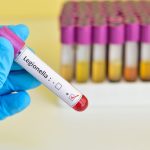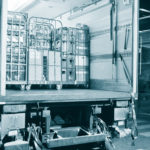Given the large number of indoor stadiums located throughout Australia, the latest carbon monoxide incident highlights certain key considerations.
On November 29, the Complete Hockey Development Centre in Ottawa, Canada was hosting a Movember fundraising ice hockey tournament. The three-on-three event was scheduled to be held between 3 p.m. and 9 p.m with a prize giving function held after at the same venue.
However, at around 1 a.m, emergency services were called after more than a dozen individuals began to show the symptoms of carbon monoxide poisoning. Some people reported nausea and dizziness, among other symptoms.
A total of 16 people mostly in their late teens and early 20s were taken to the local Queensway-Carleton Hospital.
Although initial carbon monoxide tests at the scene failed to pick up on the presence of the odourless, colourless gas, it is reported that the doors and windows were opened to bring in fresh air. This potentially flushed the gas from the environment.
A fire spokesperson told CTV Canada that blood tests at the hospital revealed that several of the individuals had high levels of carbon monoxide in their system.
Chris Monteith was hospitalised in the incident and told CTV what had occurred.
“I think all of us are a little short of breath. It’s definitely an unfortunate thing, we all feel quite sick still.”
“My cousin that was at the hospital there with me until 8 a.m. last night getting treated, he actually had to go back because he was coughing up blood and throwing up blood this morning.”
According to reports, the cause of the carbon monoxide was traced to a faulty exhaust vent in the complex which was repaired in the days following the incident.
This case comes just months after a similar incident in Quincy High School’s Flinn Stadium in Massachusetts. In October, students and parents reported headaches and breath shortness after the school’s Oktoberfest Band Competition.
What are the most appropriate solutions?
There are 28 commercial indoor stadiums in use across Australia used for a range of events including netball, basketball and concerts. This is in addition to the thousands of stadiums used by schools and community groups on a regular basis.
With carbon monoxide a constant risk, it is important that industry professionals servicing and maintaining ventilation systems, heaters and air conditioning units have the best equipment possible.
One tool that can be used is the testo 317-3 Ambient CO Meter that can detect even the smallest trace of carbon monoxide. It can also be connected to a testo printer so data can be shared with building owners and authorities.









 Reduce cooking oil costs while ensuring quality
Reduce cooking oil costs while ensuring quality Expert knowledge on CO2 monitoring
Expert knowledge on CO2 monitoring Refrigeration knowledge - in 3 modules
Refrigeration knowledge - in 3 modules



